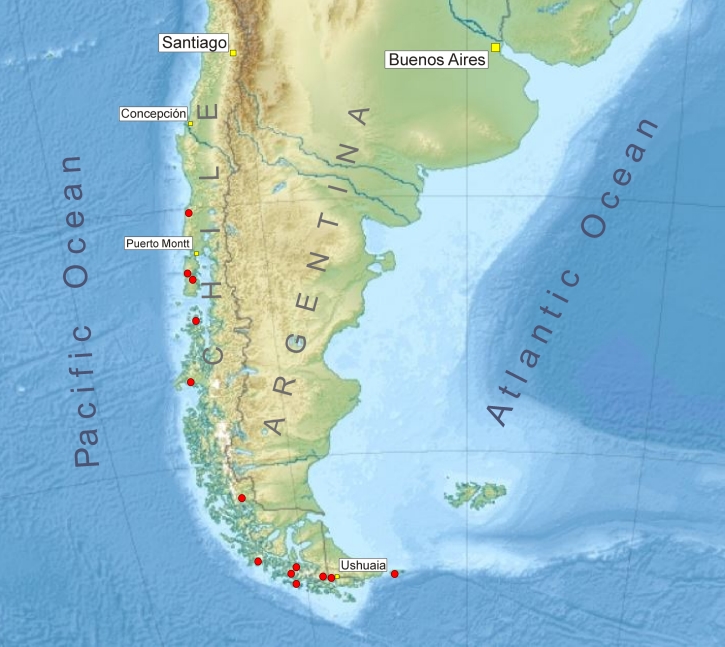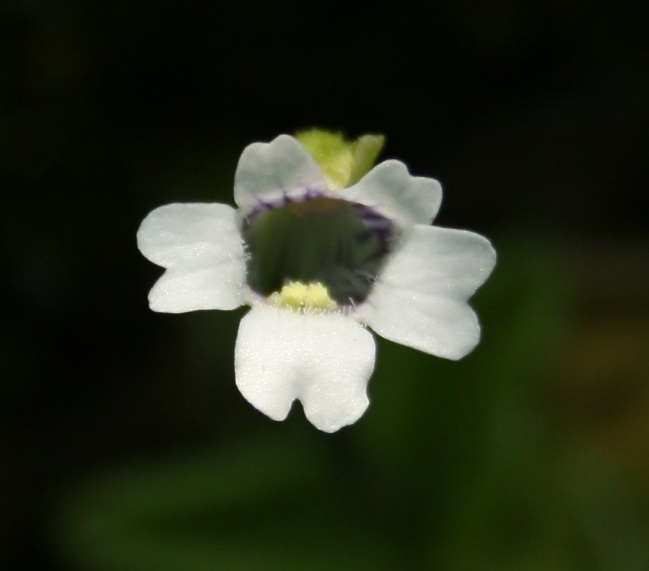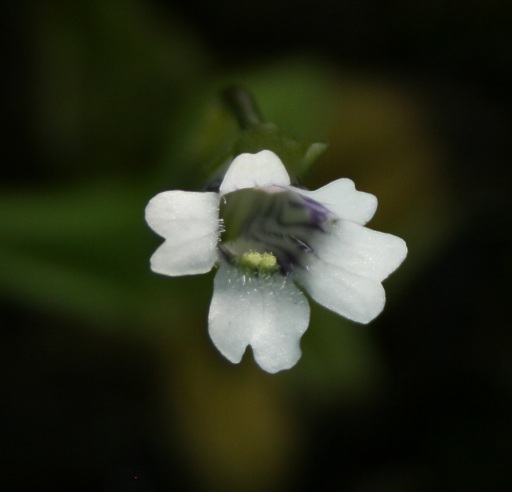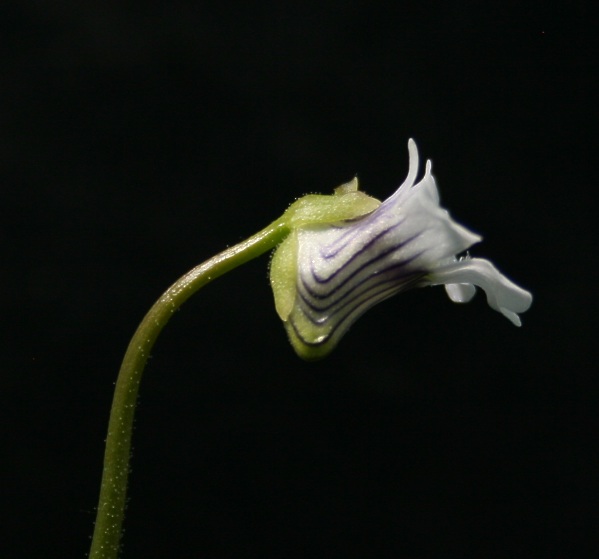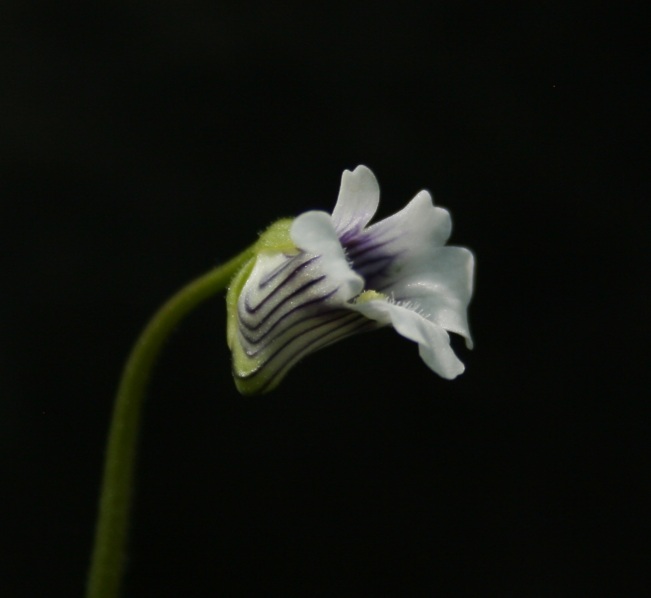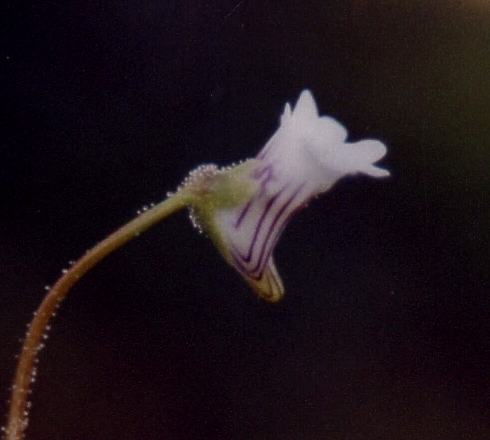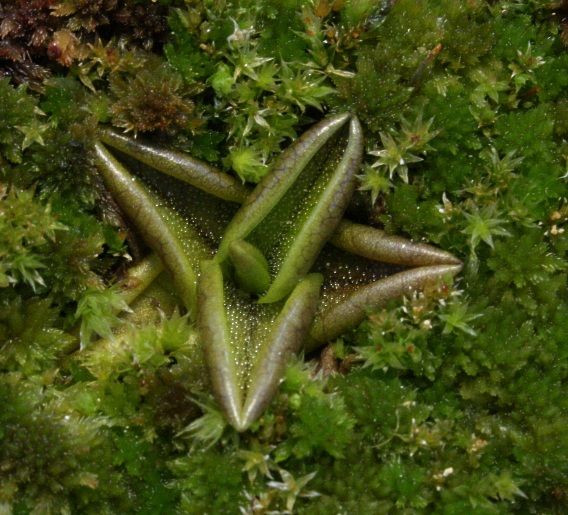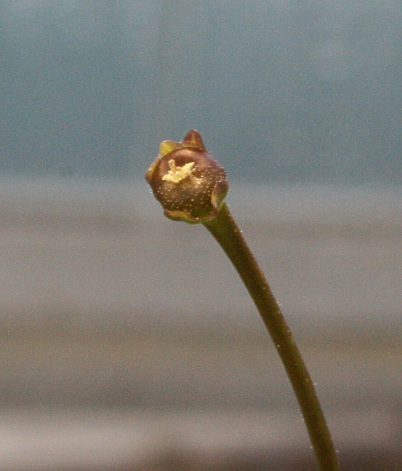
Oliver Gluch's World of Carnivorous Plants or: "What you always wanted to know about butterworts" |
| Impressum |

| Home | Origin | Prey | Species | Plant Purchase | Other Carnivorous Plants | Info about Carnivorous Plants | About me |
Pinguicula antarctica Vahl (1827)Although
already
described in 1827, this species found its way into
cultivation of Pinguicula
enthusiasts only in the 1990s. The reason for this
may have been that P.
antarctica occurs only in remote areas in
southern Chile and Patagonia. The habitat of this
species is the Patagonian peat bog flora, which can be
found from Tierra del Fuego (Land of Fire) and the
offshore islands of the Magellan Street up to the higher
located areas of the Chilean Coastal Mountain Range. In
literature the northernmost latitude for the occurence
of P. antarctica
is the island of Chiloé, but very likely the
distribution range of this species may still be further
north into the Valdivian Coastal Mountains. This
southernmost butterwort grows mainly in peat bog
mosses or in cushions of Donatia fascicularis.
Sometimes the species can also be found on
moist soils under pine trees or even on bare rocks.
The predominant climate is cool and rainy (with
annual precipitations of up to 2000 mm) and in
winter frost can occur.
In
culture
the rosette can reach a size of 4 cm in diameter,
consisting of 6-8 leaves. As all other
South-American butterwort species P. antarctica
does not
form a hibernaculum (kind of a winter bud). This means
that the plants survive the cold winter months with its
leaf rosette (the leaves are smaller during winter and
they are more involute). Therefore the species belongs
to the tropical homophyllous growth type.
The species can form up to 5 flowers (at least in culture). After the flowering period is finished, the flower scapes still continue to grow and can reach a length of 15 cm and more. Often P. antarctica is taken for P. chilensis, but the morphological differences especially for the flower are numerous. The corolla lobes of the lower lip are mostly double in size compared to the corolla lobes of the upper lip and they are more incised. The colour of the corolla and the corolla tube is white with violet veination. The spur is short and obtuse, often barely separated from the tube. P. antarctica seems to be a self-pollinator. The seed capsule is oblate at the top. For
the
culture of P.
antarctica living Sphagnum
moss of small, slow growing species or pure peat seems
to be a good substrate. But the species seems to grow
well also in pure vermiculite. During winter time,
especially when aeration is poor, the plants seem to be
susceptible to Botrytis
infection. A fungicide application is then often the
only chance to safe the plants. As the roots can get
very long (5-6 cm) it is recommended to avoid
waterlogging in the root area.
|
